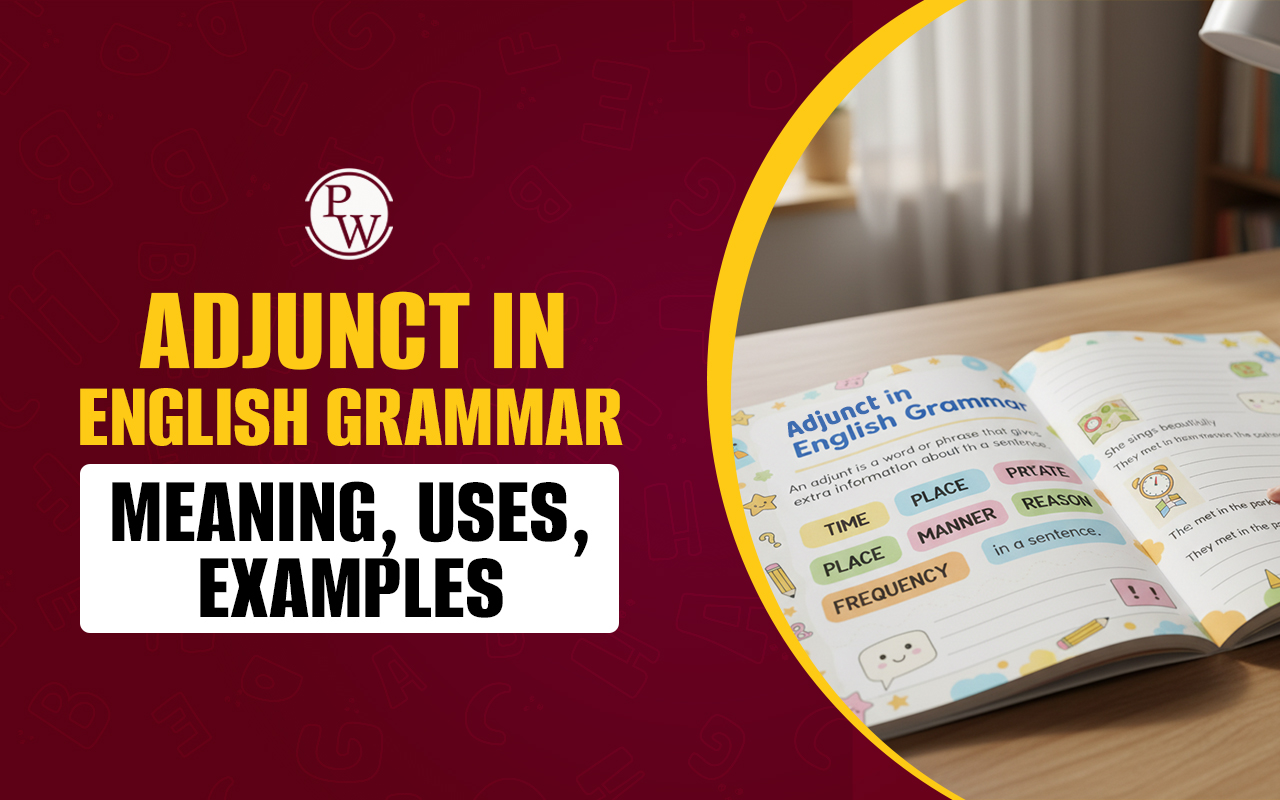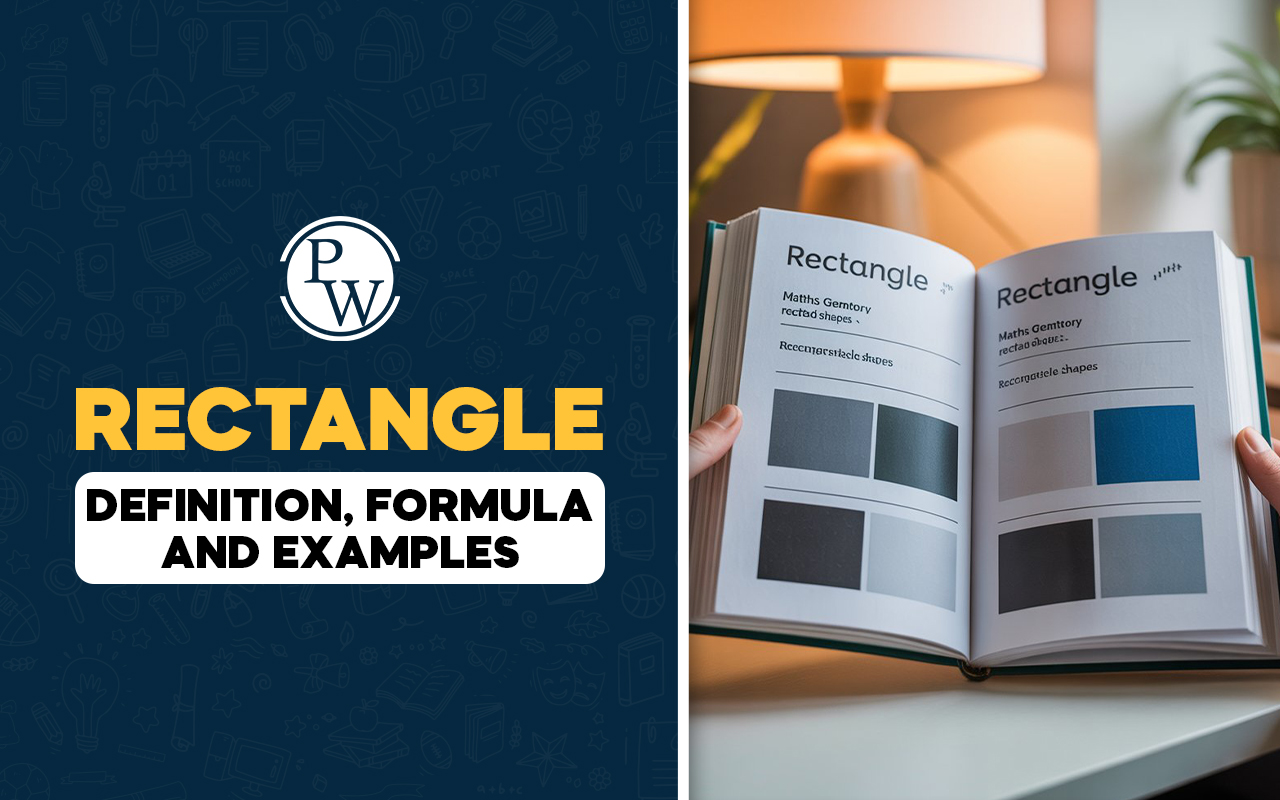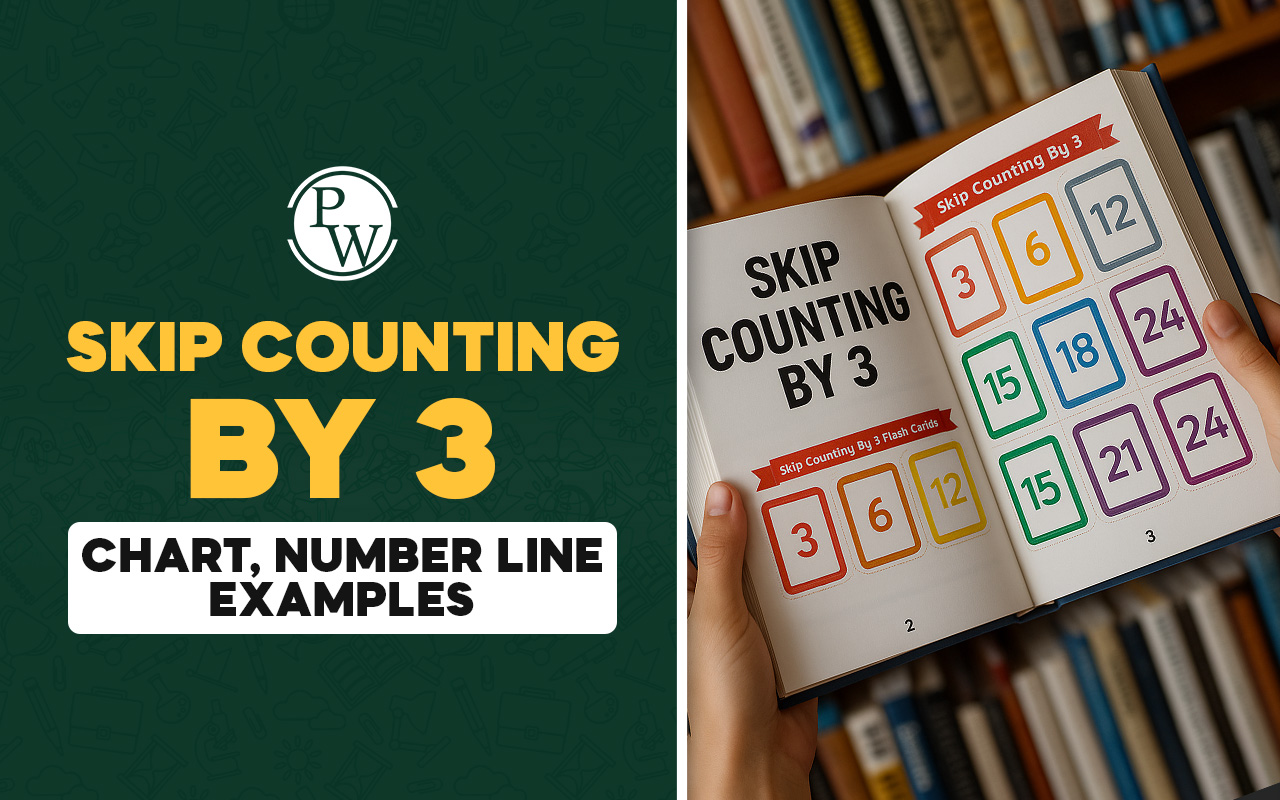
What is Parallelogram?
Parallelogram meaning - A parallelogram is a two-dimensional geometrical figure with four sides where the opposite sides are parallel and equal in length. If you are wondering “what is a parallelogram” in simple terms, think of it as a slanted rectangle that still follows special rules of geometry. Understanding parallelogram definition, properties, and formulas makes it easier to solve mathematical problems related to geometry, trigonometry, and even real-life applications in physics and engineering.
Learning about a parallelogram also helps in building problem-solving skills, as it connects to algebra, coordinate geometry, and vectors. Students often ask “what is parallelogram in geometry?” or “what is a parallelogram used for?” — the answer lies in its wide use in both academics and practical life.
Read More: Direct and Indirect Speech
Definition of Parallelogram
A parallelogram definition in geometry states that it is a quadrilateral in which both pairs of opposite sides are parallel and equal in length.
For example, ABCD is a parallelogram.
Therefore, we can say,
-
AB and CD are parallel and equal
-
AD and BC are parallel and equal
Properties of Parallelogram
A parallelogram has its own set of unique properties. To truly understand what is a parallelogram, one must explore its key properties. These properties hold for all types of parallelogram and are used in solving many geometry problems.
Key Parallelogram Properties:
-
Opposite sides are equal and parallel
-
Opposite angles are equal
-
Adjacent angles are supplementary (sum is 180°)
-
The sum of all angles is 360°
-
Diagonals bisect each other
-
Each diagonal divides the parallelogram into two congruent triangles
Let’s explain these properties with the help of the following diagram.
In the above parallelogram ABCD, we can relate the following properties:
-
Opposite sides are parallel, which means AB || DC and AD || BC
-
Opposite sides are equal, which means AB = DC and AD = BC
-
Opposite angles are equal, which means ∠A = ∠C and ∠B = ∠D
-
Adjacent angles are supplementary which means ∠D + ∠C = 180° and ∠A + ∠B = 180°
-
The sum of all angles is 360° which means ∠A + ∠B + ∠C + ∠D = 360°
-
Diagonals bisect each other, which means AE = CE and DE = BE
-
Each diagonal divides the parallelogram into two congruent triangles, which means that triangles ABD and CBD are congruent and triangles ADC and ABC are congruent.
Read More: What is Hexagon? Definition, Types with Examples
Types of Parallelograms
The types of parallelogram are classified based on their sides, angles, and diagonals. Common types include:
Rectangle
It is a type of parallelogram in which all the internal angles are 90 degrees, and opposite sides are equal and parallel. The diagonals are of equal length.
In the rectangle ABCD, we can relate the following properties:
-
Two pairs of parallel sides: AB || DC and AD || BC
-
Four right angles: ∠A = ∠B = ∠C = ∠D = 90∘
-
Opposite sides of equal lengths: AB = DC and AD = BC
-
Two equal diagonals: AC = BD
-
Diagonals bisect each other.
Rhombus
It is a type of parallelogram in which all sides are equal and opposite sides are parallel. The internal angles are not right angles. The diagonals are equal in length and bisect each other at right angles.
In the rhombus ABCD, we can relate the following properties:
-
Two pairs of parallel sides: AB || DC and AD || BC
-
Four equal sides: AB = BC = CD = DA
-
Equal opposite angles: ∠A = ∠C and ∠B = ∠D
-
Diagonals that are perpendicular to each other: BD⊥AC
-
Diagonals bisect each other: BM = DM and AM = CM
Square
This type of parallelogram has four equal sides, and all internal angles are 90 degrees. The opposite pair of sides is parallel. The diagonals are equal and bisect each other at right angles.
In the square ABCD, we can relate the following properties:
-
Two pairs of parallel sides: AB || DC and AD || BC
-
Four equal sides: AB = BC = CD = DA
-
Four right angles: ∠A = ∠B = ∠C = ∠D = 90∘
-
Diagonals are equal: AC = BD
-
Diagonals are perpendicular to each other: BD⊥AC
-
Diagonals bisect each other: AO = CO and DO = BO
Read More: Abstract Nouns
General Parallelogram
It is the typical parallelogram with no right angles, and opposite sides are equal and parallel. The diagonals may or may not be equal in length, but they bisect each other.
In the general parallelogram ABCD, we can relate the following properties:
-
Two pairs of parallel sides: AB || DC and AD || BC
-
Opposite sides are equal: AB = DC and AD = BC
-
Equal opposite angles: ∠A = ∠C and ∠B = ∠D
-
Diagonals bisect each other: AO = CO and DO = BO
Parallelogram Formulas
Before solving problems, it is important to understand the parallelogram formulas used to calculate its area and perimeter. These formulas are simple yet highly useful in geometry, trigonometry, and even real-world applications like land measurement, construction, and physics. By learning the correct formulas, students can easily solve questions based on different types of parallelogram.
Area of Parallelogram
The area of a parallelogram is calculated by multiplying the length of its base and its height (the perpendicular distance between the base and the opposite parallel side).
So, the formula for the area of a parallelogram is:
Area (A) = Base (b) X Height (h)
Perimeter of Parallelogram
The perimeter of a parallelogram is the total length of all four sides. The formula for the perimeter of a parallelogram is:
Perimeter (P) = 2 (sum of adjacent sides)
= 2 (a + b)
Where a and b are the lengths of adjacent sides.
Read More: Figures of Speech
Parallelogram Examples
1. Find the area and perimeter of a parallelogram with base 15 cm, height 8 cm, and side length 6 cm.
Solution:
-
Area = base × height = 15 × 8 = 120 cm²
-
Perimeter = 2 × (15 + 6) = 2 × 21 = 42 cm
2. In a parallelogram ABCD, the sum of the two opposite angles ∠A and ∠C is 70 degrees. Find all four angles of the parallelogram.
Solution:
In the parallelogram, the opposite angles are equal.
Therefore, ∠A = ∠C
Again, ∠A + ∠C = 70
Or, ∠A + ∠A = 70
Or, 2∠A = 70
Or, ∠A = 35
Therefore, ∠C = 35 degrees
Again, the sum of adjacent angles in the parallelogram is 180 degrees.
So, ∠A + ∠D = 180 degrees
Or, ∠D = 180 - ∠A
Or, ∠D = 180 – 35 = 145
Again, in the parallelogram, ∠D = ∠B
So, we can say ∠B = 145 degrees
Therefore, the measurements of all four angles of the parallelogram are:
∠A = 35 degrees, ∠B = 145 degrees, ∠C = 35 degrees, and ∠D = 145 degrees
Also read: Top 10 Longest Words in English
Importance of Learning About Parallelograms
Studying parallelograms and their properties helps strengthen your understanding of geometry, vectors, and algebra. In higher mathematics, concepts from parallelograms apply to different topics, which include:
-
Coordinate geometry
-
Trigonometry
-
Vector mathematics
-
Physics and engineering problems
Understanding the parallelogram as a special geometrical shape clarifies mathematical concepts and real-world applications. Knowing how to use parallelogram formulas, recognise properties, and identify types of parallelograms helps in problem-solving in competitive exams quickly and accurately.
Make Math Easier and More Fun with Curious Junior’s Maths Online Classes
Many parents worry when their child consistently underperforms in math due to slow calculations, frequent errors, or a lack of clarity in basic math concepts. As they struggle to catch up, it takes a toll on their academic growth.
Curious Junior Maths online classes offer an effective solution, offering tailored programs for students in classes 3 to 8 to strengthen their foundational math skills through structured learning.
Key Benefits:
-
Students learn short tricks to solve math problems quickly through interesting mental math exercises.
-
We analyse each child’s learning style, strengths, and areas of improvement and carefully provide tailored support and guidance.
-
With visual aids, logic-based puzzles, and hands-on techniques, we make complex concepts easier to understand and apply.
-
Through dedicated mentorship and doubt-solving support, we provide focused attention to help students stay on track and excel.
-
Real-time feedback for performance tracking makes parents and students aware of improvements and areas.
Curious Junior math online classes enable students to approach math problems with logic, accuracy, and speed, which benefits them far beyond the classroom. Book a demo class today and see how your child builds a strong, positive relationship with math.









